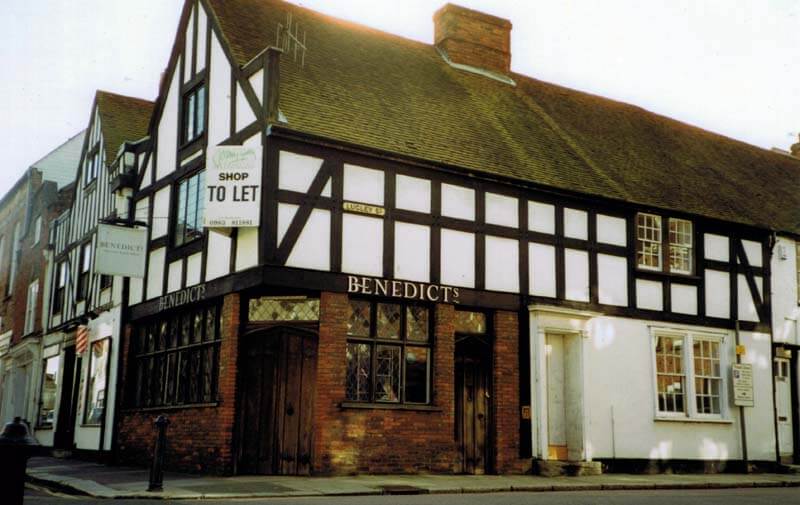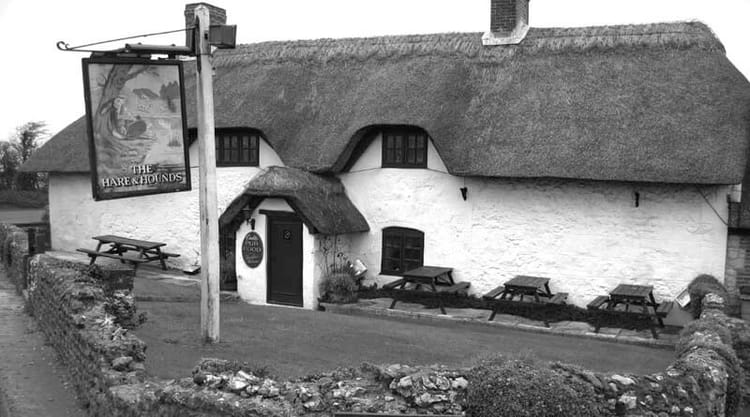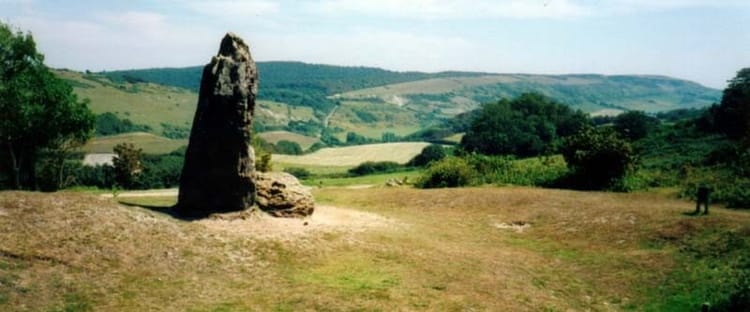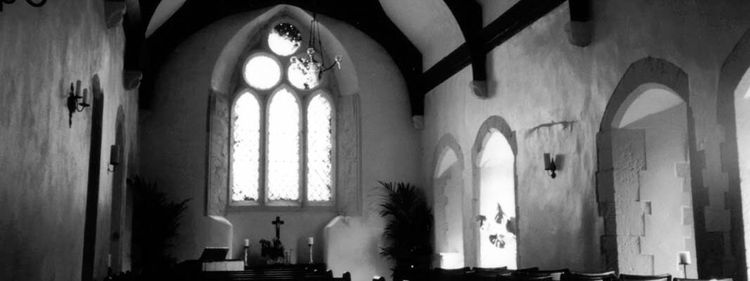Blackgang Chine. Unsolved Mysteries Isle of Wight
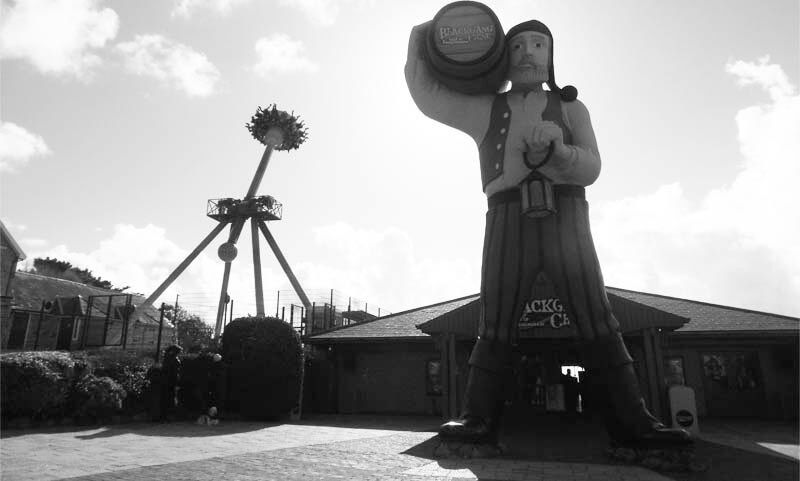
Halloween venue for 'Terror Island' and "Fiesta of the Dead" the supernatural is front and centre in everyone's minds at Blackgang Chine.
At any other time there is too much else to light up the imagination. But doubtless the ghost along the road gazes over the fence in wonder at the wonders happening in the park. Thrill-seekers' screams of delight fill the sky from awesome aerial attractions.
Dabell's World of Wonders
The world-famous fantasy park attraction, Blackgang Chine is the result of a brilliant visionary. During the 1840s Victorian visitors flocked to see the spectacular gardens established by businessman Alexander Dabell.
Over tea and cucumber sandwiches visitors gasped at the seascape garden and rumoured about how fortunate he was; of how he purchased as much as he could throw a stone. Some throw; some acreage, as dramatically beautiful as anywhere in the world.
And every year since, the Dabell family has improved and updated the gardens to suit changing times and technology. Not simply to amaze, is the motto, but to educate and stimulate the mind. Designed with wit and scale Blackgang Chine is not only one of the world's first fantasy theme parks but remains one of the best.
The ghost of the old Undercliff road has witnessed its entertainment evolution.
Exploring the haunted Isle of Wight
Smuggling, Wrecking, Flotsam & Jetsam
Many visitors to the island associate the name Blackgang with an especially nasty gang of smugglers but according to Wightologist AD Mills it is an Isle of Wight term for a 'dark path or track'. But smugglers there were here.
In his brilliantly definitive guide: 'Smugglers of the Isle of Wight' the great but late Richard J. Hutchings eloquently explained Flotsam, Jetsam and Lagan for those of us who do not know the difference.
In mitigation for whatever misdeeds the smuggling communities may have done, Hutchings suggests these be seen as nuanced and onioned because the islanders suffered so cruelly from passengers who arrived on invasion ships. Fair recompense, if they had the chance to benefit from the contents of their latest rulers' ships that washed ashore off shipwrecks along the coast.
They were flotsam or jetsam and belonged to no one. The problem was that some said the ships were in no trouble until they saw the wreckers' lanterns and survivors would have lived happily-ever-after had not someone accidentally dropped something heavy.
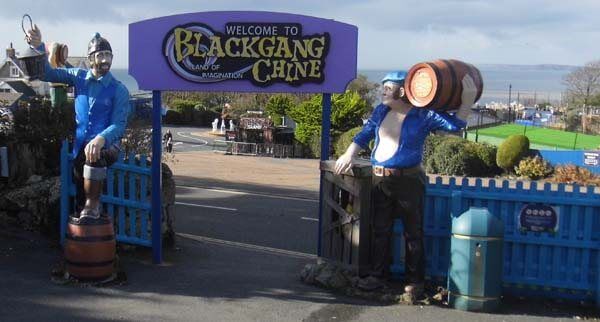
Hutchings spells it out: what sank was jetsam, what floated was flotsam and whatever washed up along the shore was wreck. And then there was lagan: this was content that ought to be flotsam, but was jetsam on account that someone had sunk it deliberately and would return for it later.
However, all this was irrelevant if anyone survived. Then the King's law applied, but a number of local glass-half-empty types in Niton's Buddle Inn suspect that some unhelpful smugglers sidelined as problem-solvers in unexpected human resource situations.
Unless a deal was agreed, like with the Captain of the shipwrecked St. Mary de Bayonne, which resulted in the construction of St. Catherine's lighthouse and oratory high on the hill above the chine. A fixed light to guide the way for shipping and a chapel in which to pray to God for souls on board.
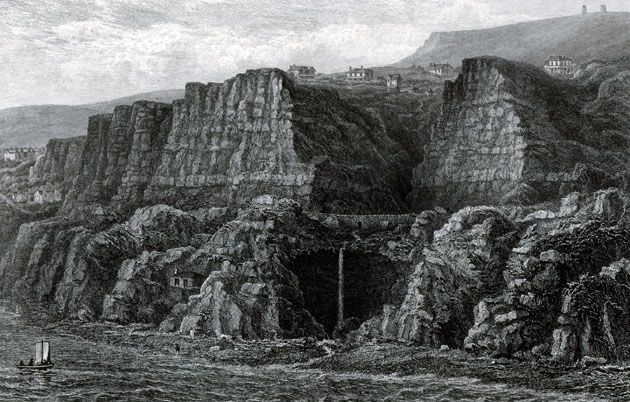
Wight's Dark Wonder
The Needle Rocks are rightly famous but this great dark wonder of the Wight: Blackgang Chine, and the spectacular land and seascape of this southern tip of the island is just as impressively dramatic.
* WARNING: When exploring any coastline always first seek local information from experienced sources regarding tides, cliff slides and environmental change. The following guide is of historical reference only, and should not be used as substitute for the above safety warning.
Guide-writer Davenport-Adams remembered the climb down...
"Casting a glimpse into the chasm, and on its many-coloured walls, survey the desolation of nature in all its primeval grandeur.
Bare bleak, iron-hued rocks, piled in layers one upon another - no verdure, no wild flowers, no gnarled, fantastic trunks of trees - a wall of dark blue indurated clay - a ledge of black ironstone forming the cornice of the cliff, a flashing stream breaking into a myriad diamond sparkles in its descent of seventy feet - such are the principal features of Blackgang."
Picture a deep semi-circular chasm in the cliffs, whose projecting horns, as it were, while almost enclosing it, slant downwards to the shore, in irregular masses of rock; picture this chasm as backed by a wall seventy five feet high - a wall of dark blue clay streaked by horizontal strata of ochreous sandstone, and hollowed by the ceaseless action of the descending stream on the substratum of black ferruginous clay which chiefly composes it, into a gloomy recess or cavern, glittering with the constant spray and darkened with aquatic lichens.
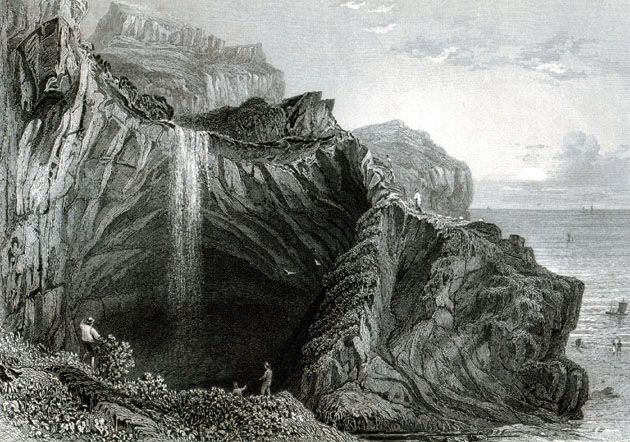
Picture this wall as built up, layer upon layer, and topped with an overhanging cornice of 'iron stone grit' which forms the channel of the stream percolating from the upper hills, and projects it in a cascade over the face of the cliff; picture this stream descending perpendicularly, and contrasting its bright waters marvellously with the dark hues of the wall behind it.
The ocean waters surge up to the very foot of the cliff, and fling their echoes into the gloomy hollow, and not a tree, not a shrub, not a flower breaks the sombre aspect of the sides of the chasm.
And above tower broken, barren cliffs four hundred feet in height, and above them, but slightly receding from them rears the majestic hill of St. Catherine, crowned by the clouds.
Picture a scene so grand, so unusual. Picture Blackgang Chine."
The Long Lost Road to Windy Corner
Some glass-half-full Wight islandologists claim there were no wreckers at Blackgang. The fault for most shipwrecks belonged to any foolish captain in too close. But all too often the fixed light didn't shine so bright in St. Catherine's oratory high on the hill above. Mist and cloud enshrouded the tower.
And sometimes it shone but there was nothing anyone could do. Not even God, when a storm struck.
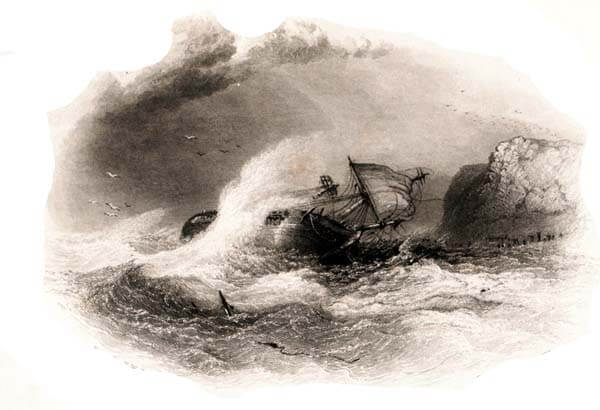
There didn't need to be wreckers insist islandologists. And maybe they are right, for the Isle of Wight is unforgiving of captain's error, its shoreline spiteful to shipping in contrary winds and waters.
But doubtless someone walked the Undercliff road to Niton via windy corner, carrying a lantern and a sizeable unpaid tab in the Buddle Inn; and saw opportunity to be unhelpful to a ship not in trouble.
And ended up as a ghost of Blackgang Chine. Or so some ghost hunters believe.
Thank you for your company on this short tour of Isle of Wight mysteries and haunting. If you would like to know more about Margo Williams' investigations in the Blackgang Chine area and other matters of life and death, read this book. Now available from Amazon.

